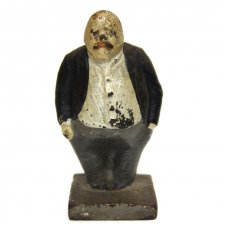
Some prime ministers
Sarah Engledow explores the history of the prime ministers and artists featured in the exhibition.
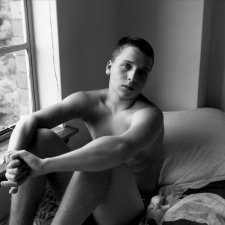
NPPP 2011 exhibition essay
Dr Sarah Engledow, National Photographic Portrait Prize judge and curator, introduces the 2011 Prize.

Nicholas Harding: 28 Portraits
Exhibition essaySarah Engledow looks at three decades of Nicholas Harding's portraiture.
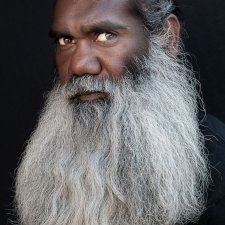
The more things change...
NPPP 2017 exhibition essayDr Sarah Engledow, National Photographic Portrait Prize judge and curator, introduces the 2017 Prize.

Pets of all types take over the National Portrait Gallery
3 November 2016It is not every day that a national gallery turns its walls over to the animal companions that bring unconditional love and joy to their owners but this summer we have opened the doors to 15 contemporary artists with very different ways of depicting our furry, feathered and scaled pets.

Noel McKenna
It’s a matter beyond dispute that in the entire history of Australian art, it’s Noel McKenna who’s painted the liveliest rendition of the head of a Chihuahua.
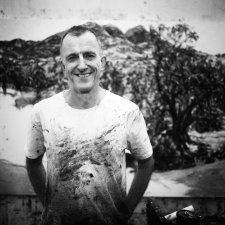
Nicholas Harding
Over the years the young Nicholas Harding got his hands on various mice and guinea pigs, but they served mainly to illustrate the concept of mortality.
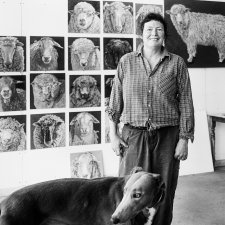
Lucy Culliton
Most well-regarded pictures of chickens show them dead. A reliable way to tell if a chicken in a painting is dead is to check if it’s hanging upside down, because unlike, say, cockatoos, chickens don’t practise inversion for enjoyment in life.
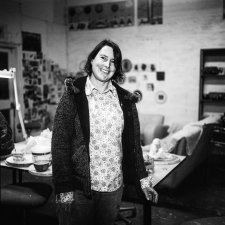
Anna Culliton
Anna Culliton never had a colouring-in book when she was little. Her parents –Tony, a filmmaker, and Stephanie, a painter – wouldn’t let her have one. Instead, they insisted on her drawing her own pictures to colour-in.

Jude Rae
Jude Rae’s high reputation rests on her austere, cerebral still lifes of gas canisters, electric jugs and jars, which she groups and rearranges for paintings that catch their difficult curves and reflections. Her self-portrait’s likewise thoughtfully composed.

William Robinson
Unique in the world, perhaps, is a bronze sculpture that fuses the age-old human portrait bronze tradition, and the later genre of the bronze pug figurine: that’d be William Robinson’s Self-portrait with pug.
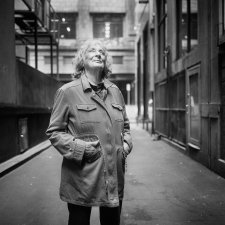
Janet Dawson
When soulmates Janet Dawson and Michael Boddy moved from Sydney to a property, Boddy was clear about why: ‘Our marriage is one long conversation - we moved to the bush so we could talk to each other without so many interruptions.’
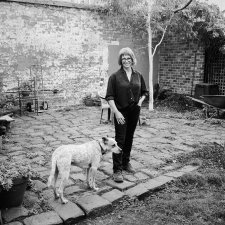
Kristin Headlam
Basil grew into a speckled beauty – a long-legged leaper and an exceptionally vocal dog, with a great register of sounds, ascending in shock value from a whimper to a growl to a bark to a yelp that’s a violation of the ears.
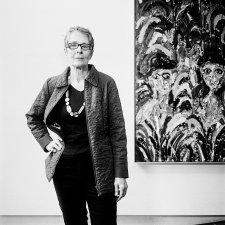
Davida Allen
Going around a gallery with a child, we point to a painting of a dog and brightly ask ‘What’s that?’ If they don’t say ‘A dog’, we tell them that’s what it is. We don’t say it’s a shape inscribed by an artist that’s popularly understood to signify a dog. That’d only serve to foster a smarty-pants.
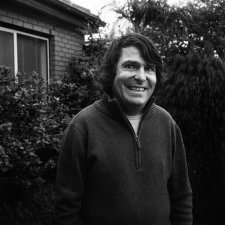
Darren McDonald
The wild balancing act of McDonald’s home décor (is that there as a joke? where do I actually sit down? is this ironic or what? what a lovely photo of Darren and Robin in Europe!) is reflected in his own personality.

Fiona McMonagle
Fiona aims to create a dangerous situation with a flood of water on the paper, forcing each work to the point where it can fail, and then rescuing it.




